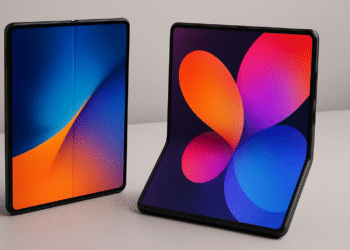Your computer needs optimizations just like any other thing you use. Updating drivers is the key to unlocking optimal performance and ensuring everything runs smoothly. These drivers act as a translator between your hardware and the operating system to make them speak the same language.
In this article, we’ll walk you through simple and easy steps to update drivers. The guide will help you avoid frustrating glitches, improve system stability, and unleash the full potential of your PC.
Why Do You Need to Update Windows Graphics Drivers?
Here are the reasons why you should update Windows graphics drivers. Updating your graphics driver can enhance the performance of your computer’s graphics, making games, videos, and other visual applications run smoother and faster. It will help make games, videos, and other visual applications run smoother and faster. Graphics driver updates often include bug fixes, addressing issues like screen flickering, graphical glitches, or freezing problems. It will improve the overall user experience.
The latest graphics driver updates ensure that your graphics card is compatible with the latest software and operating system update. It will prevent potential conflicts and crashes. Updating your graphics driver can also improve your system’s security. Some updates may address vulnerabilities that could be exploited by malicious software or attackers.
For gamers, updating the graphics driver can often lead to better performance in the latest game titles, as newer drivers are often optimized for newly released games.
Outdated graphics drivers can lead to system instability, causing random crashes, or application errors. By updating your graphics driver, you can ensure a more stable and reliable computing experience.
Keeping your graphics driver up to date ensures that you can take advantage of ongoing support and updates from the graphics card manufacturer. Regularly updating your graphics driver is a simple but effective way to maintain a smooth and enjoyable computing experience. The fact is truer especially if you use your computer for gaming or graphics-intensive tasks. It’s generally a good practice to check for driver updates periodically or enable automatic driver updates if your operating system offers that option.
A Step-by-step Guide on How to Update Drivers in Your Windows PC
In this step-by-step guide, we’ll explain how to update Nvidia drivers on Windows.
1. Command Prompt can help you generate a drivers’ list
Command Prompt may sound a bit techy, but it’s a handy tool to see what drivers you currently have on your PC. It can help you to generate a report of all types of drivers installed on your system. Here are the steps that you can use to see the list of installed drivers on your system:
Step 1: Press the “Windows + R” keys on your keyboard simultaneously. It will open a Run dialogue box on your screen.
Step 2: You can also type “cmd” in the search option to open Command Prompt.
Step 3: Now, type “driver query” and press Enter.
You’ll get a neat list showing all the drivers installed on your PC, along with their names and versions. This way, you can see which drivers need to update from this list.
2. Use Driver Booster to automatically update your graphics driver
Driver Booster is the leading driver updater that can make the process easier and accelerated for you. The tool can scan and update 6,500,000+ device drivers automatically to ensure a smoother computing experience.

The outdated drivers can affect the performance of your computer significantly. However, Driver Booster 10 can scan your computer system quickly to install or update driver on the go. This quick driver updater is here to help you keep your graphic drivers updated without any hassle.

The tool contains all the new drivers always ready to install and update on your device. Regardless of which driver you want to update on PC, you can get it from here. Above all, all the drivers available here are sourced from their original resources. So, you can be stress-free of your system security and stability.
3. Use Device Manager to check installed drivers
Device Manager is your built-in solution for managing graphic drivers manually. It’s a bit like organizing your computer’s wardrobe:
Steps to update driver in Windows 10.
Below is the process to update the graphics driver in Windows 10:
Step 1:Right-click on the Start button. The button is in the bottom-left corner.
Step 2:Click on Device Manager in the menu that appears.
Step 3:Inside Device Manager, find the category related to the driver you want to update. For example, if you want to update graphics drivers, look for “Display adapters.”
Step 4:Now, right-click on your graphics device and choose “Update driver.”
Step 5: Windows will ask you how you want to search for updates. Pick the option to “Search automatically for updated driver software.”
Your computer will go through the internet and fetch the latest driver for you. Just sit back and let the process complete.
Steps to update driver in Windows 11.
Here are the steps that you should follow to update the graphics driver in Windows 11:
Step 1:Start by right-clicking on the Start button.
Step 2:Then click on Device Manager from the menu.
Step 3: Inside Device Manager, find the category that matches the driver you wish to update. For graphics drivers, again, look for “Display adapters.”
Step 4: Give your graphics device a right-click, and this time too, choose “Update driver.”
Just like in Windows 10, choose “Search automatically for updated driver software.” Windows will complete the task automatically by finding the latest driver for your graphics card.
4. Use Windows update to update graphic drivers
Updating Windows can be another effective way to keep your graphics driver updated. Here is how you can install windows update to complete the process:
Step 1: Go to the Start button and then select Settings.
Step 2: Now select Update & Security.
Step 3: You will see the Windows Update option here.
Step 4: Now click the “Check for updates” button.
Step 5: Windows will search for any available updates to install from here.
Conclusion
Keeping your drivers up to date is crucial for maintaining the optimal performance of your Windows PC. Drivers act as bridges between your hardware and the operating system. They ensure everything runs smoothly on your PC. Use this guide to update the Windows graphics driver without any hassle.
FAQs
How to check if your graphic driver is updated?
Here is how to check whether your Graphics driver is updated.
- Open “Display settings”.
- Scroll down to Advanced display settings.
- You can check the driver version and date under the display information option here.
Does Windows update graphic drivers automatically?
Windows Update is an efficient solution here. It automatically downloads and installs driver updates, including graphics drivers.













